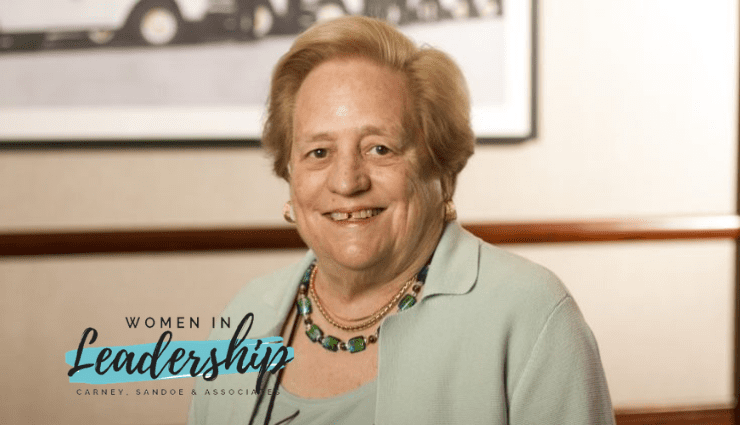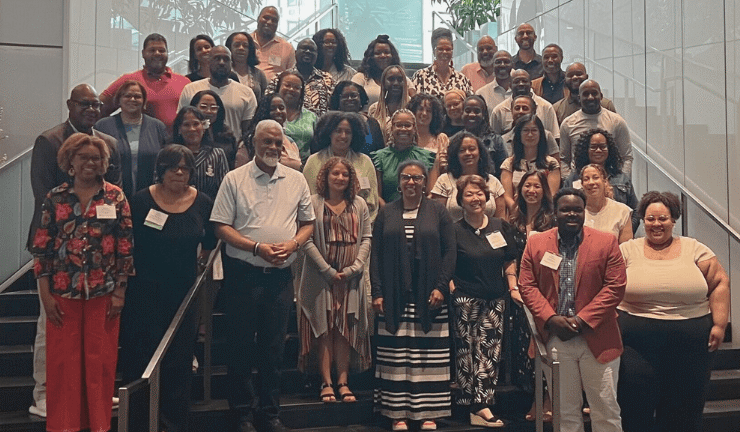Aggie Underwood: My Journey to Headship

This spring, CS&A is shining a spotlight on women in leadership. This piece is one of a series of stories about female leaders in independent schools, the importance of mentorship, and their professional journeys. Find the full series here.
CS&A is proud to have hosted the third-annual Women’s Institute on June 14 in Boston, an event designed to support women and their allies in the education community. Our Placement and Search Groups are dedicated to increasing the number of women in leadership roles as part of our commitment to diversity, equity, and inclusion.
I entered the field of education back in the 1960s with no preconceived notion of the profession. I was an economics major in college, which was unusual for women at the time. I had enjoyed studying economics, but afterward I tried several related jobs that ended up feeling repetitive and unchallenging.
In an effort to rethink my career, I canvased friends who were excited about their work. Many of them, it turned out, were in education. So, I decided to enroll in the apprentice teacher program at Shady Hill School in Massachusetts. The program, which is still going today, now leads to a teaching license in the State of Massachusetts or to graduate credits at Lesley University. For me, it also led to my first teaching job as a fifth grade teacher at The Spence School in New York City.
The Shady Hill program is grounded in the idea that good teachers can teach others to be good teachers. I would later learn that this apprenticeship model is fairly atypical in education, but it’s one I appreciated deeply at the time — and it would become t’s a lesson that has been foundational to my belief that good leaders have an obligation to bring others along.
At The Spence School, in truth, I didn’t have a clear career path mapped out, but I knew two things: I enjoyed teaching a great deal and I was good at it. It was here that I also met my first mentor in education, Dusty Heuston, Spence’s head of school. Dusty was committed to taking the time to teach leadership to others. His support and his willingness to find opportunities for me to learn and grow opened up a new universe in which I could not only teach but also take on administrative tasks. On occasion, he would send someone down to my fifth grade class to summon me to his office. There he’d talk about issues in education and school leadership and offer me opportunities to advance my career.
I remember walking into his office once and he held out something on his fingertip and said, “Aggie, this is going to change the world.” He was right. It was a microchip. Almost immediately we put together a group of young teachers and administrators and began to explore innovative ways to integrate computers into the curriculum. This was in the late 1970s.
Perhaps my most challenging leadership project at that time was agreeing to lead a new summer program initiated at Trinity School in New York City for public school students of color with promising academic potential. The program would evolve to become Prep for Prep, which is still going strong today preparing and placing more than 100 talented students into independent schools each year.
Besides giving me opportunities to lead, Dusty also supported me in returning to school to get my MBA at Columbia University. Afterward, he appointed me as Head of the Upper School at Spence. When I look back, I can see the way in which my career trajectory was leading me toward school leadership, but it wasn’t so much of a conscious decision on my part as an organic process. It helped a great deal to have had opportunities to lead early in my career and to have such a supportive and encouraging head. It also helped to be in New York City at a time when the city’s independent school community was full of talented and generous school leaders. I’m still amazed at the way some of the school heads — from other schools — would give generously of their time to me when I was only a fifth-grade teacher.
The women heads of school, in particular, took an interest not only in me but also in providing places where women heads and aspiring school leaders could learn from each other. They set up gatherings both in the city and at seminal conferences such as the Head Mistresses Association of the East and the National Association of Principals for Girls (now known as The Heads Network). These senior women leaders seemed always to have the time and interest to teach. Most of our informal sessions would continue well into the evening.
All of this support and opportunity set me up well for school leadership. I became Head of School at Garrison Forest School, a girls’ school in Baltimore, in my mid-30s — and would stay there for 11 years. Whenever I’m asked about those years — whenever I talk about school leadership in any context — I immediately think about the people with whom I’ve worked. It is often said that headship is a lonely position, but that hasn’t been my experience. At Garrison Forest, I had a remarkably supportive board. They understood that I was not only a new head of school but also the mother of a young child with a husband who was commuting to and from New York City. They enabled me to create balance in my life, to build in the needed time for family and school. At the same time, I had an excellent leadership team at Garrison Forest. I learned as much from them as they learned from me.
Heading a girls’ school at a time when many girls were choosing coeducation was a challenge, to say the least. But, as the saying goes, it was also an opportunity — and our team took full advantage. We pushed for new levels of academic excellence, increased the number of Advanced Placement courses, and hired more faculty members with advanced degrees and teaching excellence. We enhanced student diversity and added depth to the arts program. Perhaps most important, we significantly improved our marketing and communications. We felt we had an important story to tell but hadn’t been getting that story out to the world. Throughout my nine years as head of school, our enrollment grew steadily.
Around this time, Carol Gilligan’s remarkable research on girls at the Emma Willard School in Troy, New York, also helped guide our work. Her research helped lead to the establishment of the National Coalition of Girls Schools, which put girls’ schools on the national education map. All in all, these were heady times to be involved in school leadership.
At my second school, the National Cathedral School in Washington, D.C., again the board was committed to having a woman as head, deeply valued excellence, and offered support, clear guidelines, and even more opportunities. We also had a talented leadership team and faculty dedicated to making the school better year to year. Along with other girls’ schools, we pushed for curricular changes that not only took hold in our schools but also drove needed changes in all of education. The short list included improving STEM and arts education, giving students greater leadership opportunities and agency in their learning, paying more attention to student social-emotional development, creating opportunities for student collaboration, and otherwise connecting the curriculum to the growing brain science on learning. In particular, at National Cathedral School, we made sure the world knew about many of our remarkable alumnae, including several Rhodes Scholars.
Over these years, I also began to develop a clear philosophy of leadership — one that held everyone to high expectations but that was also very collaborative. I learned, too, the importance of supporting and encouraging aspiring leaders. For all of us who lead schools, our legacy is not only what we achieved in our time in schools but also in how well we’ve supported and guided the leaders to come. School leadership is a continuum. While each of us must bring our best to the work every day, it is the collective work of guiding schools year to year that matters most in the long run.
At the end of my career, I now help many schools find new leaders. Overall, I am deeply impressed with the men and women who are school heads today — as well as those who are aspiring to lead schools. What I see in these leaders is not only the skills to lead individual schools to be the best possible version of themselves, but also leaders who understand the value of collaboration and collegiality within and across schools.
This is how we make a difference in the lives of children. This is true leadership.








